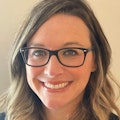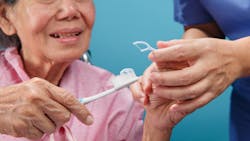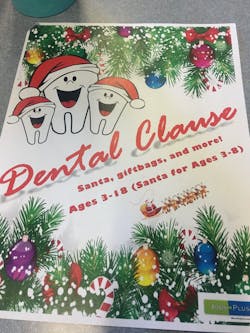Building community connections to grow your outreach program
Outreach programs come in all varieties, depending on the person or organization offering the program. Public health looks different from state to state and program to program. One thing all public health programs have in common is that their outreach efforts must be a success, and that means building strong community relationships.
Much of the success comes from building relationships and trust within a community. This does not happen overnight, and it’s not easy. Building community connections, which means building community trust, takes time, determination, and a strong desire. Here I will identify community connections and stakeholders you can engage to ensure success in your public health and outreach efforts. I’ll also discuss the necessity of strong community connections.
Engage the community
The beauty of public health is that you can be innovative in how you deliver care and education. To reach a large number of people, it’s important to network in the communities you serve. Community engagement involves those who are most affected, and they can help you understand what interventions are necessary.1 It’s the process by which organizations and individuals build a long-term relationship with a collective vision. Community engagement is primarily about moving communities toward a better change through empowerment.1
Community engagement partnerships generate benefits at both the individual and community levels.2 This is such an important piece to understand when thinking about a program. You must understand the needs of the communities you plan to serve. As dental hygienists, we want to improve our patients’ oral health and help them value their total body health. To be successful in this mission, it’s important to understand the barriers many people face when it comes to their oral health care. Oral health disparities—and overall health for that matter—are a problem for many Americans.
Throughout this series of articles, I’ve discussed many different pieces of public health programs—integrated care, mobile and portable dental programs, and the value of federally qualified health centers (FQHCs). The overarching message in the series is that we cannot expect all patients to be able to get to us on our terms. Many people struggle to get to a dental office from 8 a.m. to 5 p.m. four days a week. We must think outside the box in order to reach more people. We need innovative solutions and community partners to assist in our efforts of increasing oral health awareness and access to care. Without strong community connections, these efforts will likely fall short.
The first step toward community connections is to identify your target population and how to reach them. Most of these vulnerable populations include high-risk children, homeless populations, and aging adults who reside in nursing homes or assisted living facilities. Many populations can benefit from outreach programs, which may include preventive services such as screenings, prophylaxis, and fluoride varnish applications, or may be geared strictly toward education and referral resources. The possibilities to create an innovative outreach program are endless.
A report from the Centers for Disease Control and Prevention stated that many Americans cannot afford to pay out-of-pocket for dental care and they don’t have dental insurance. They also have trouble taking time off from work. The report stated that many people live in communities without access to fluoridated water or school-based sealant programs, where there are few healthy food choices, and that transportation issues are a barrier.3 Reports like this one are easy to find, and they support the fact that there is a huge need for outreach programs. Even if the program is education-based only, the public needs educating.
Once the terms of the program are established and the population is identified, it’s time to begin networking, which is a vital key to success in the public sector. Being seen regularly in your community helps build trust and ensures commitment. There are many organizations that can participate in the outreach efforts and serve as great partners. Some may have a health mission, such as public health agencies, hospitals, or FQHCs.2 Sometimes these traditional partners are joined by public and private sector partners, such as community-based organizations, faith-based organizations, businesses, the education sector, housing, justice, and transportation agencies.2 It’s important to remember that alone we can accomplish some, but when we partner with others, we can reach many more people. Community partners can often provide unique perspectives, as well as access to beneficial resources.
The steps involved
The first steps toward creating community partnerships can be as easy as a phone call. For example, if a nursing facility has been identified as offering an outreach program, call to speak to an administrator. Introduce yourself and your program and ask to meet with them. Also, look into locations where people gather for education and contact them. The core of this work is believing that community strength is essential to sustainably solving any health inequities.4
Meaningfully partnering with these organizations means recognizing the limitations of solutions derived from outside of those communities.4 For example, public housing facilities, where you can offer oral health education to residents, can be great partners. I started this in my community. It took showing up several times to offer education before I earned the trust of the residents. But after four or five visits, I became a familiar face.
While working with the housing authority, we held an event called Dental Clause in December of 2018. I provided oral health education, fluoride varnish, and toothbrushes, and the police department handed out stuffed animals to the children. Remember, outreach success does not happen quickly or easily. A strong foundation built on trust and partnerships is critical to any outreach efforts.
What next?
I hope you’re thinking about community partners in your area that you can reach out to for a conversation. Even if starting a program is not your current interest, hygienists are a wealth of knowledge for so many people. I often contact organizations just to introduce myself and ask them to call me if they ever need a dental referral or oral health information. I’ll be happy to help. Hygienists have so much to offer, and we don’t need an elaborate public health plan to be resources in our communities.
As dental hygienists, we thrive on being around people and building relationships. Public health is no different. The opportunities to seek community partners and strengthen outreach efforts is very rewarding. Community connections benefit the public and strengthen us as providers. Together, we can have a big impact on the oral health of Americans and create strong community partnerships along the way.
Editor's note: This article appeared in the October 2021 print edition of RDH.
References
1. Community engagement. World Health Organization. https://www.who.int/risk-communication/training/Module-B5.pdf
2. Baciu A, Negussie Y, Amy Geller A, Weinstein JN. Communities in action: Pathways to health equity. National Academies of Sciences, Engineering, and Medicine; Health and Medicine Division; Board on Population Health and Public Health Practice; Committee on Community-Based Solutions to Promote Health Equity in the United States. January 11, 2017. National Academies Press.
3. Disparities in Oral Health. Centers for Disease Control and Prevention. Edited February 5, 2021. https://www.cdc.gov/oralhealth/oral_health_disparities/index.htm
4. Engaging grassroots: Intentionally building community power to drive oral health systems change. DentaQuest/CareQuest. https://www.carequest.org/sites/default/files/DentaQuest%20Partnership%20Grassroots%20Progress%20Report%202019_final.pdf
BROOKE CROUCH, RDH, is a remote supervision dental hygienist with more than a decade of clinical experience in private practice, a state agency, and a federally qualified health center (FQHC). Crouch is an adjunct instructor and mobile dentistry consultant. She is vice president of the American Mobile & Teledentistry Alliance and she serves on several clinical advisory, oral health action, and community-based boards and committees throughout Virginia. Contact her at [email protected] or on her various social media at brookecrouchrdh.
About the Author

Brooke Crouch, RDH
Brooke Crouch, RDH, is a registered dental hygienist with over fourteen years of clinical experience, both in private practice and public health. As a high-risk patient herself, with Sjogren’s Disease, she understands the need to be the patient’s advocate and to provide evidence-based preventive options. Brooke is proud to serve as the Professional Education Specialist for Elevate Oral Care and serves on the ADEA Corporate Council Administrative Board.

